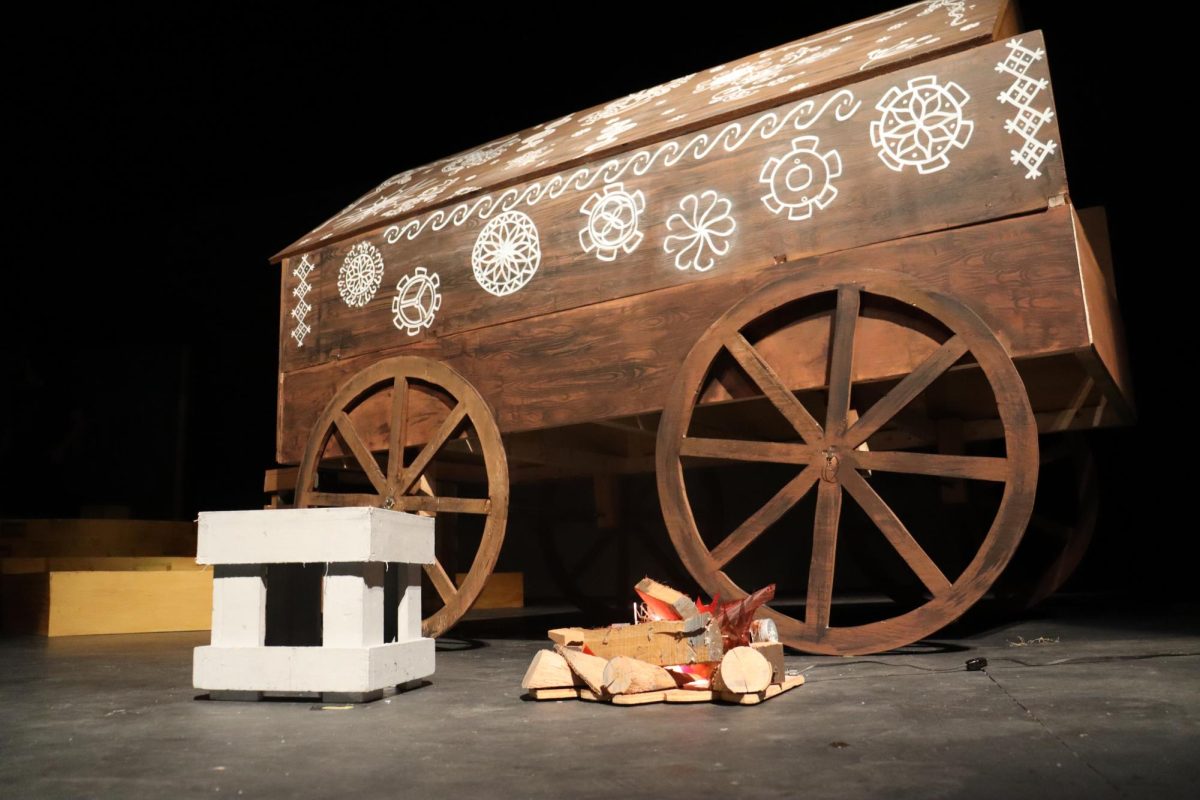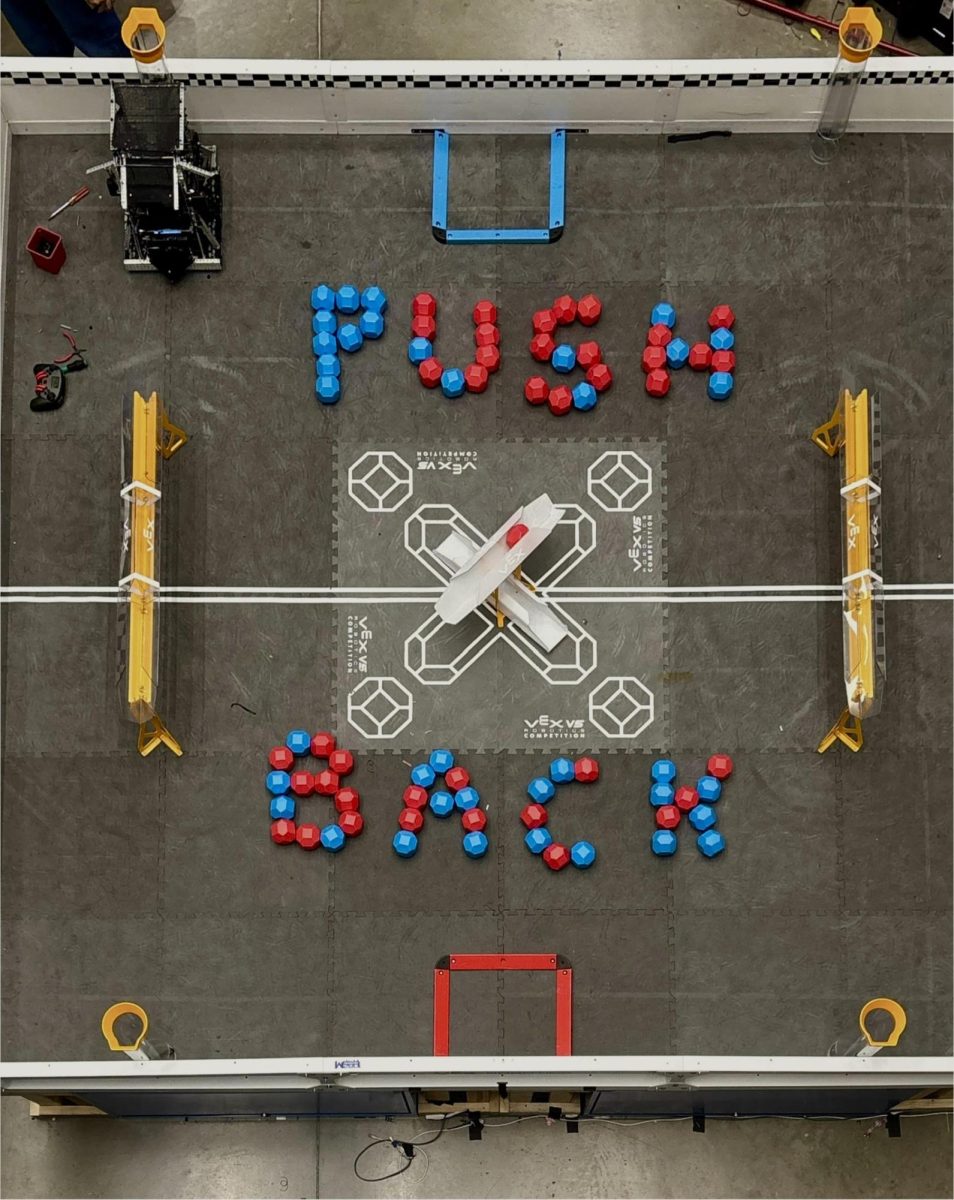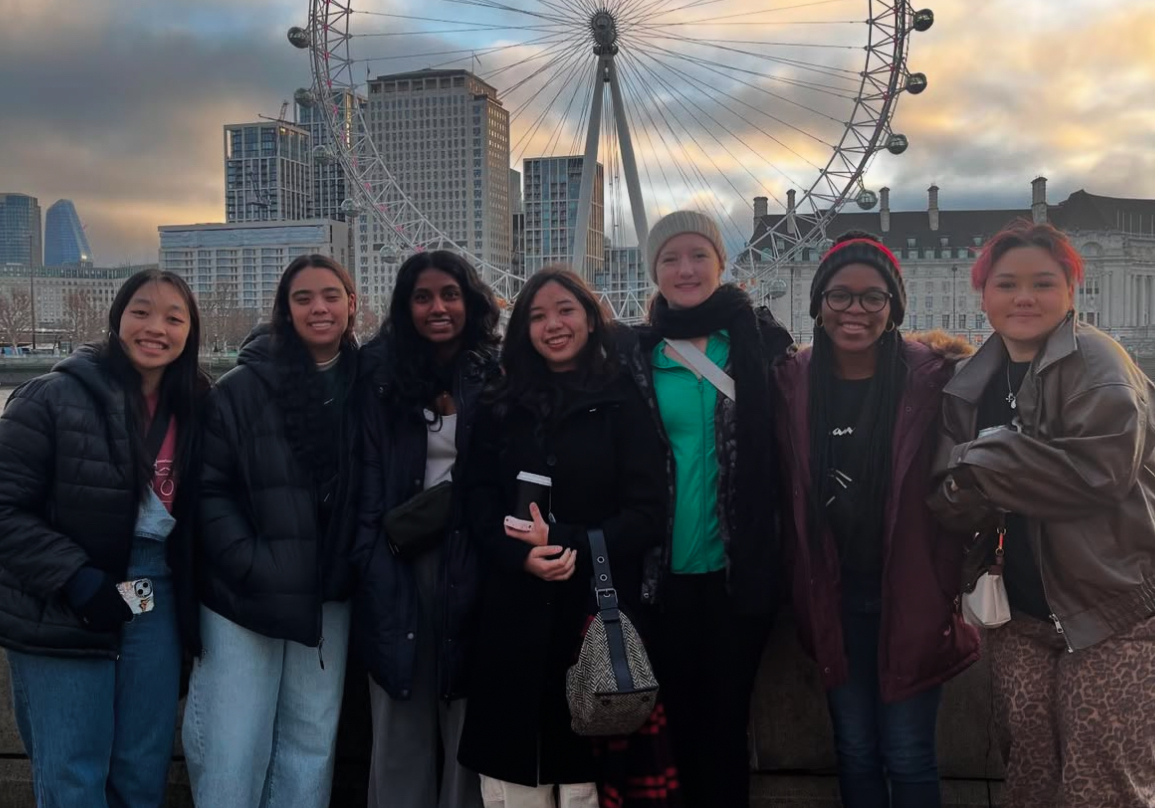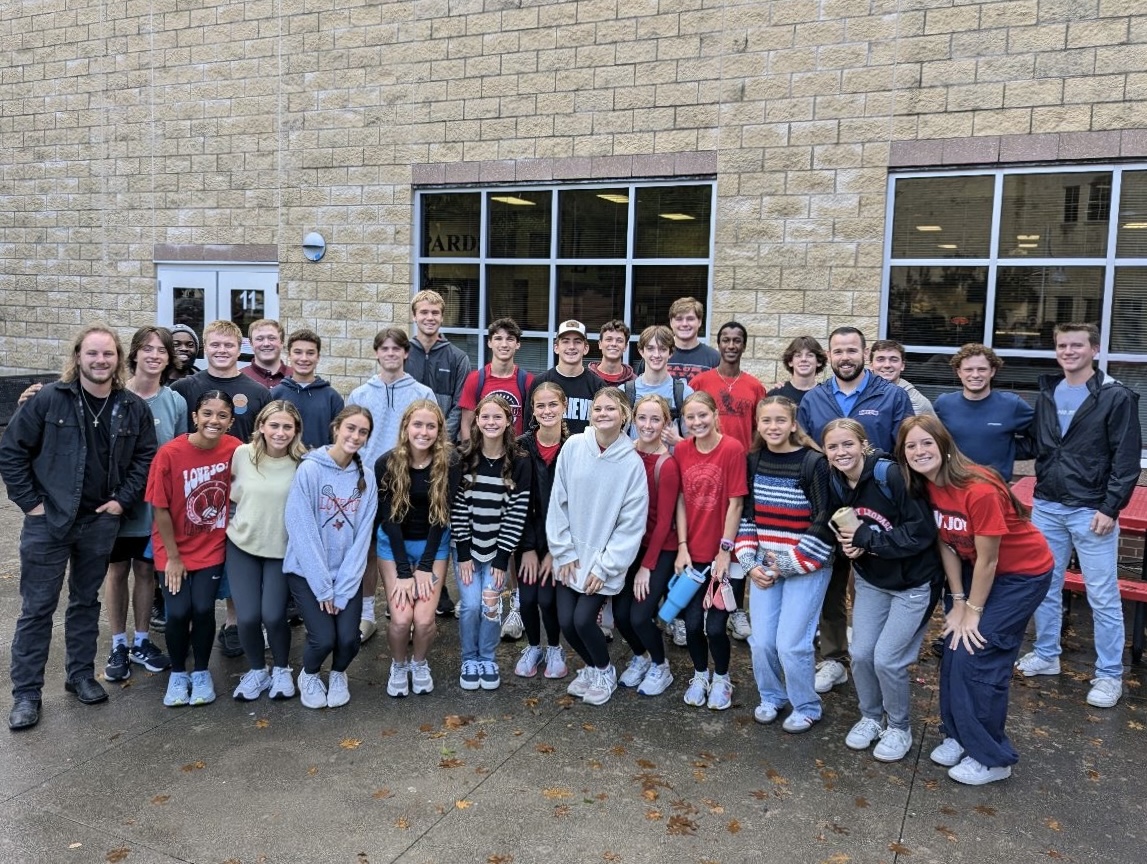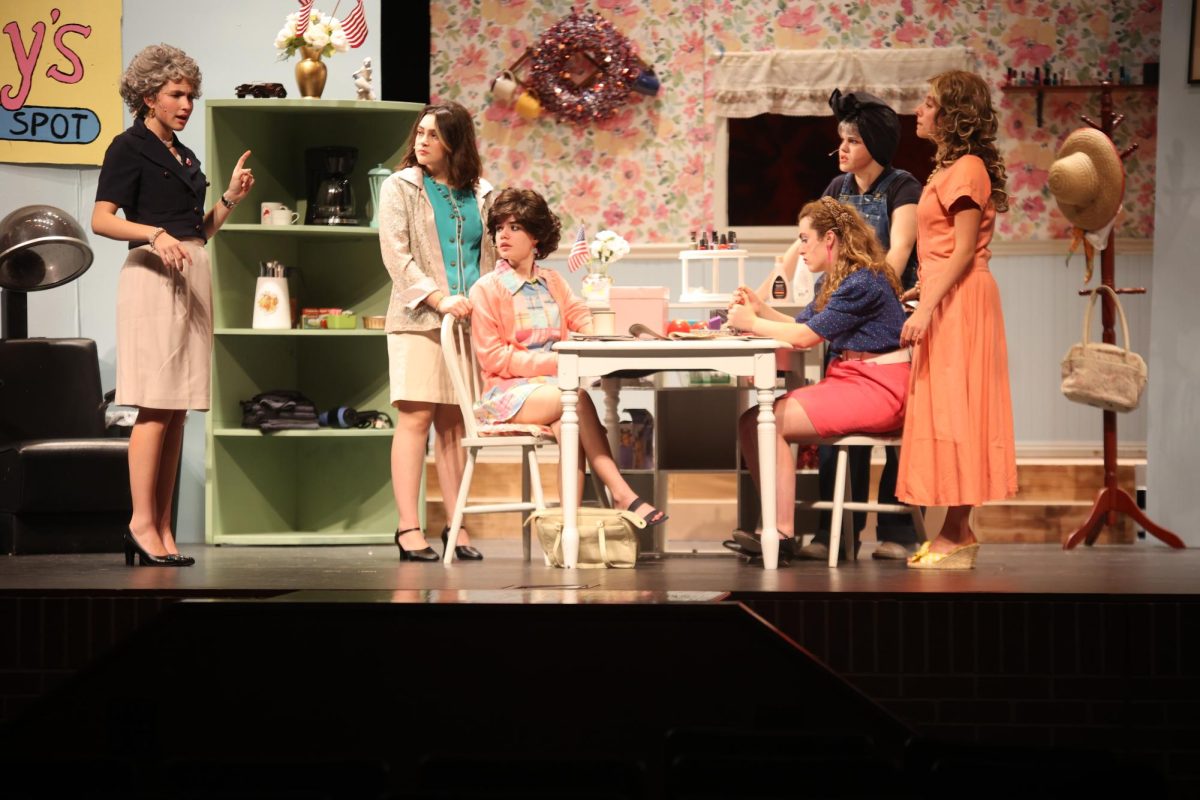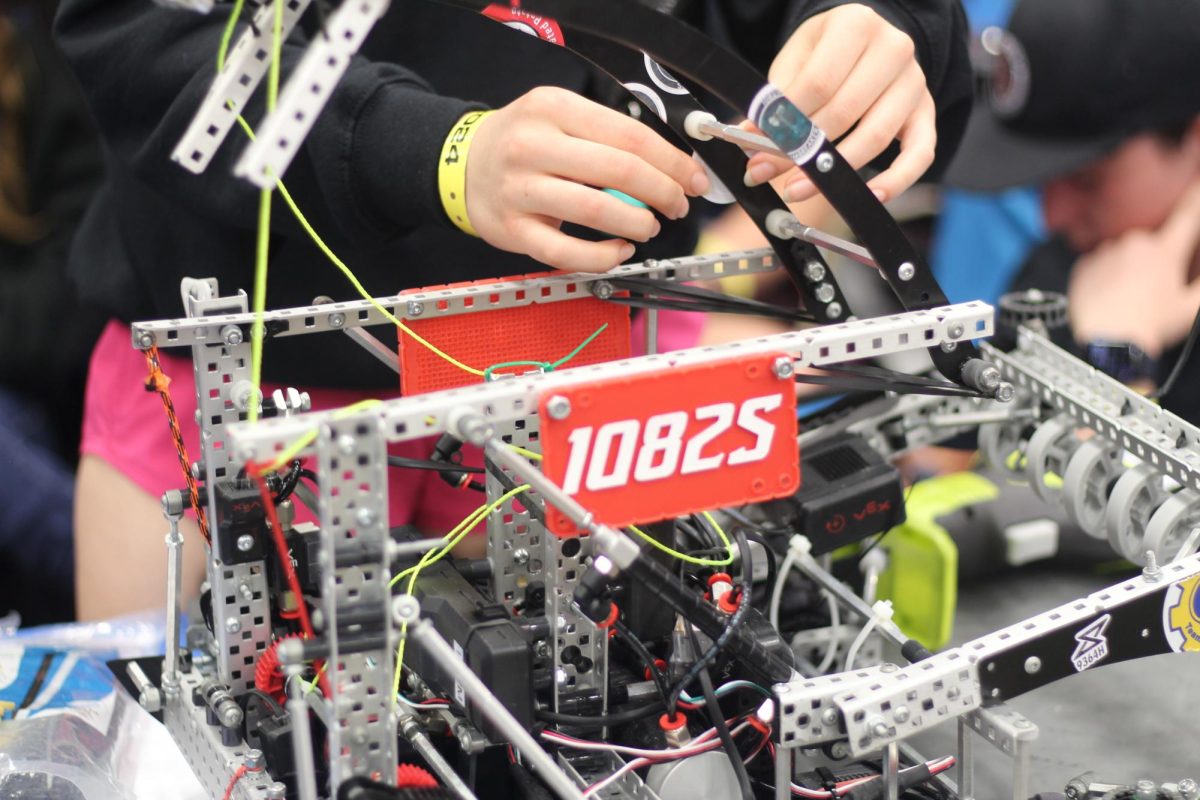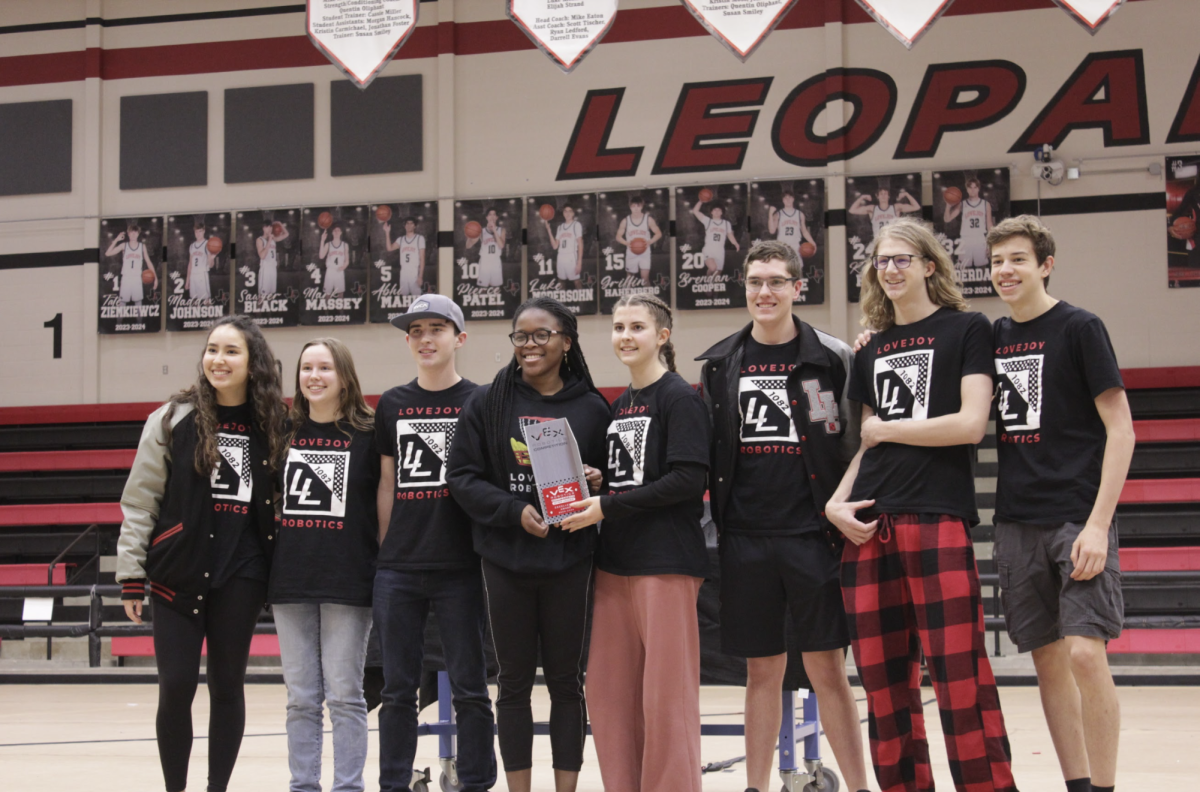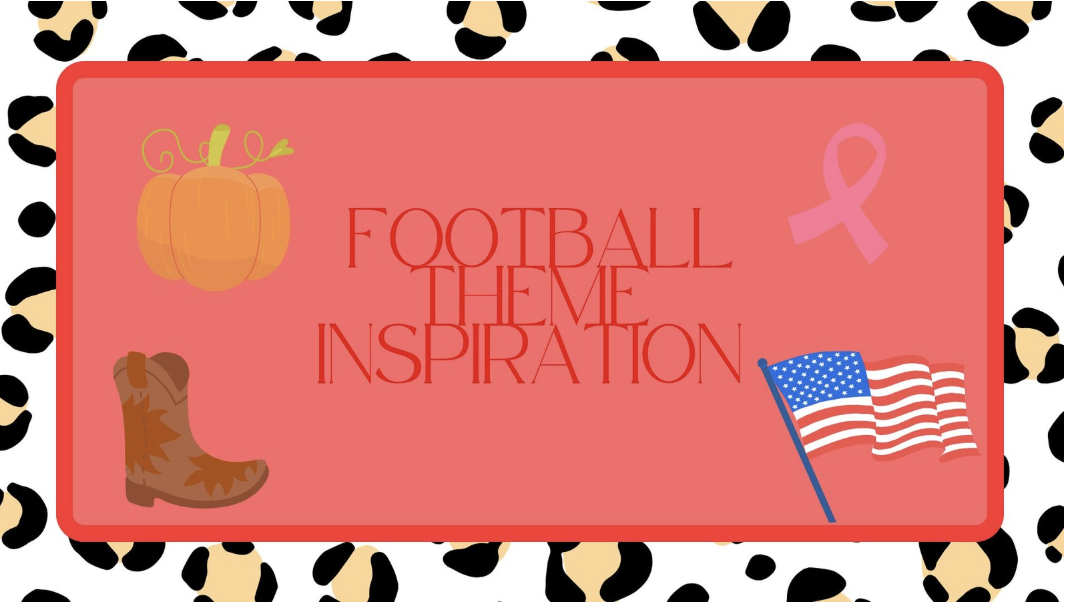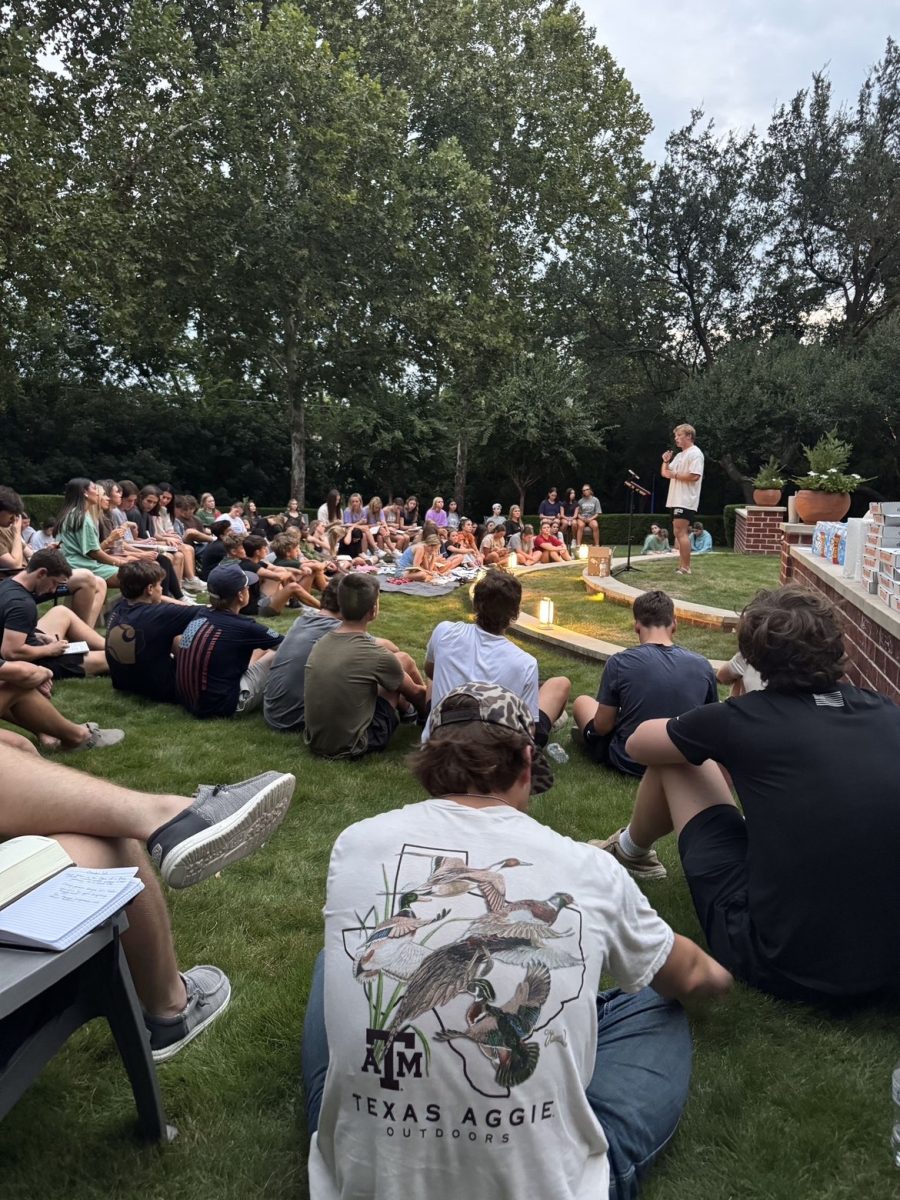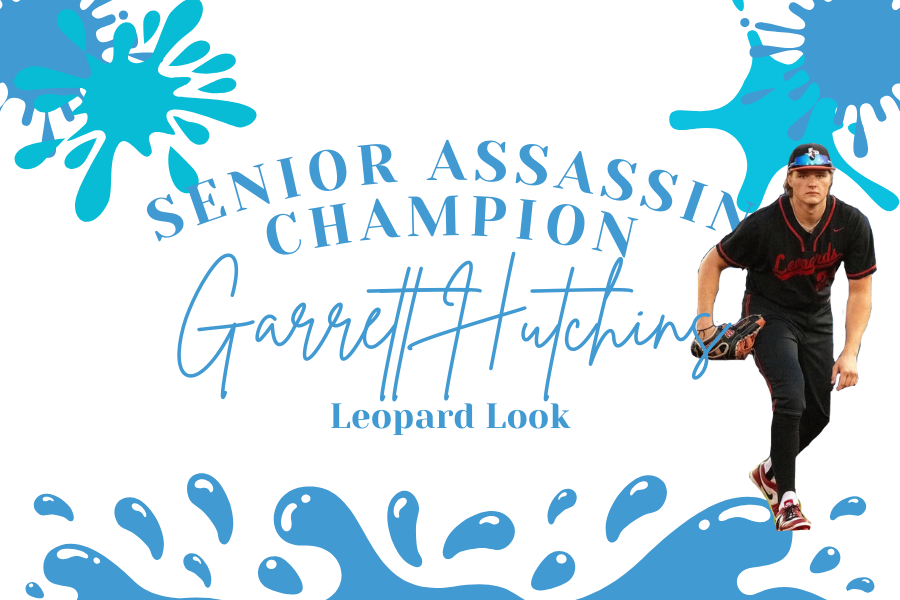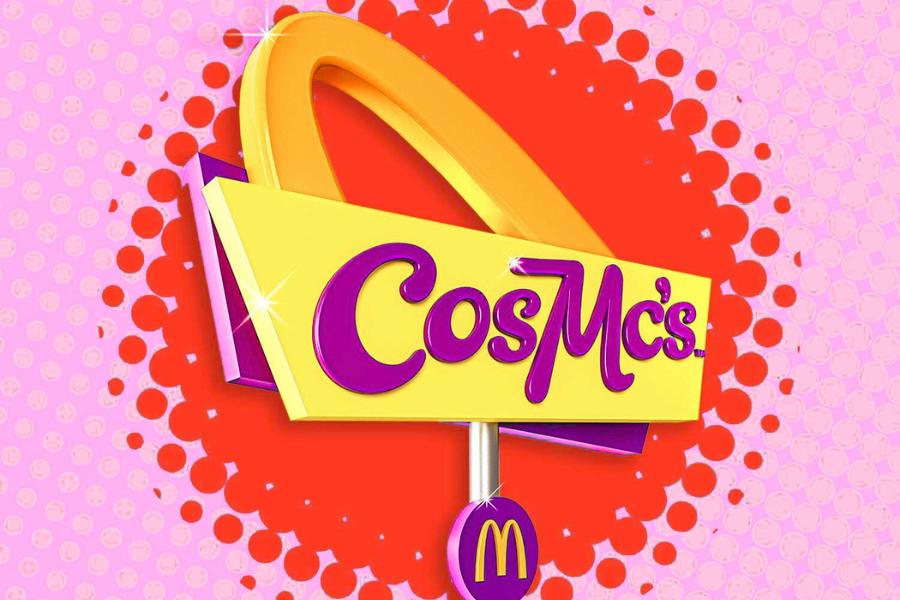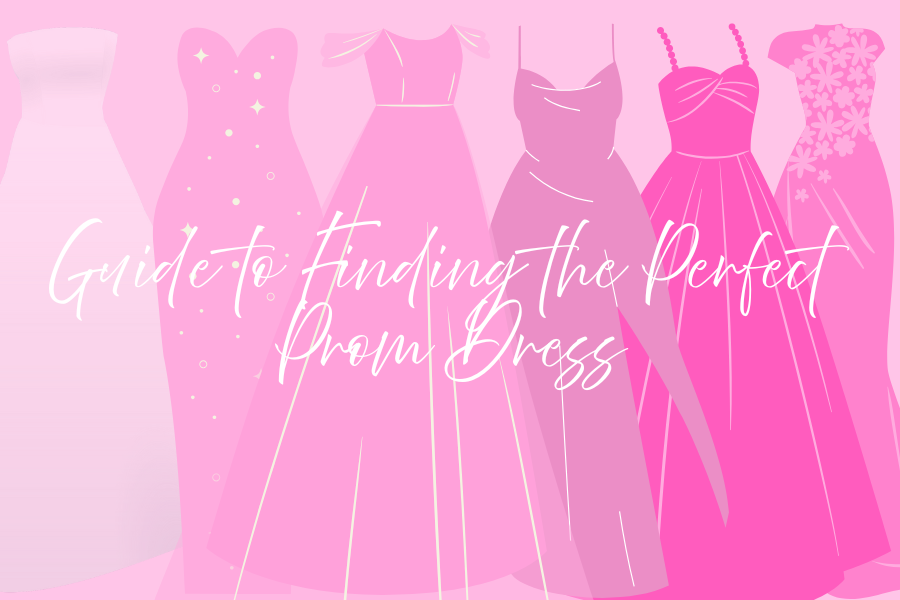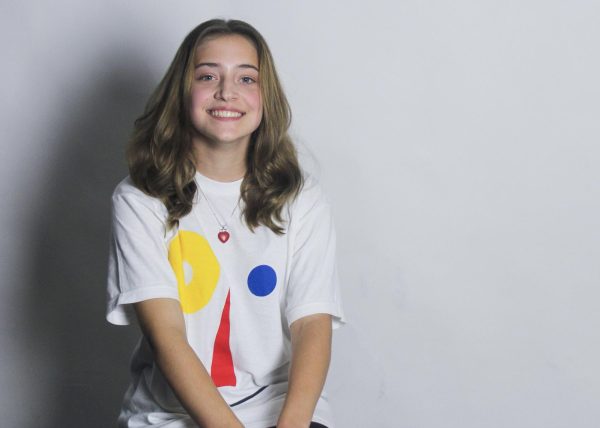Since early November, the Lovejoy Theater Technical Crew have been working on the ambitious set for the 2024 musical, The Wizard of Oz. Over the course of a few months, hundreds of hours were poured into 8 foot tall paintings, customized props, handmade accessories, mobile rooms, a hot air balloon, and a series of curved platforms that assembled into a 3D gear over 10 feet wide. Now that performances are through, Mr. Anderson decided to arrange a gallery for people to have a closer look. The exhibit is called “Relics of Oz,” and will occur in the Black Box on February 23rd. If you are interested, please arrive around 6 p.m. for a showcase celebrating students’ hard work, featuring speakers to demonstrate their processes.
A top view of the central gear, about 14 feet in diameter. It was used as a multifunctional “Yellow Brick Road,” the center of a cornfield, a visual reminder of steampunk incorporation, and a device to keep choreography interesting. Curved platforms were built individually, then assembled and painted.
CONTRIBUTORS: Blake Gatlin (Designer), Audrey Bolen, Marshall Gatlin, Lisa Cortez, Michael Anderson, Eric Oesterling (Building), Rachel De Hoyos, Ainsley Alexander, Christina Wang, Sonali Joshi (Painting)
2 periaktos pushed together to create a field of painted poppies. Every periaktoi had 3 outer faces and 3 inner faces, formed by using the undersides revealed by opening the doors in a parallel line. The pictured poppy sides are essentially 4×8 portraits, and were designed by senior Emma Hansen.
CONTRIBUTORS: Emma Hansen (Designer), Michael Anderson (Building), Emma Hansen, Adriane Anderson (Painting)
Periaktos on stage left and right split apart, revealing the City of Oz, which was pushed to the front. The depiction of Oz is different from the original, and incorporates the “steampunk” theme through pipes, factories, machinery, and the approaching blimp. This painting is one of the most detailed sides of any of the periaktos, and took many additional hours of work after school.
CONTRIBUTORS: Emma Hansen (Designer), Michael Anderson (Building), Emma Hansen, Adriane Anderson (Painting)
A fully mobile Witch’s Chamber, complete with spellbooks, potions, a skeletal spider moved up and down from a string, and a taxidermy bat affectionately named “Clark.” The crystal ball was programmed to an LED box, hidden by the wooden cover. During the show, LED designer Galilea Cardenas could control it using custom colors that she carefully picked.
CONTRIBUTORS: Michael Anderson, Lisa Cortez, Eric Oesterling (Building), Kore Russel, Grey Myers, Eli Marchbanks (Decor and detail work)
Dorothy’s house in Kansas, which doubled as part of the Witch’s Chamber when turned around. The inclusion of shingles, exterior floorboards, railing, and a “roof” made the illusion more realistic, as well as the “weathered” painting job. This set element was enhanced using Mr. Anderson’s previous knowledge in AV Installation.
CONTRIBUTORS: Michael Anderson, Lisa Cortez, Eric Oesterling, Jacob Smithwick, David Lynch (Building), several assorted painters
A wide angle view of how the full stage was set for Kansas. From left to right is a storm cellar, the 3 periaktos used in nearly every setting, and the Kansas House. The storm cellar was transformed into a hot air balloon in Act 2 by draping a black fabric over it and flying down suspended plywood designed to look like a basket.
CONTRIBUTORS: Emma Hansen (Periaktoi Designer), Michael Anderson, Lisa Cortez, Eric Oesterling, Jacob Smithwick (Building), Emma Hansen, Adriane Anderson (Painting)
The Scarecrow’s costume, modeled by Blake Gatlin, distressed and paired with several different garments from Rose Costumes in Denton. All pieces were chosen by Pinella Crosson, who selected (and in many cases, created) the costumes for Wizard of Oz. Rose is an approved vendor in partnership with the Theatre Department.
CONTRIBUTORS: Pinella Crosson (Costume Mistress), Avery Smith (Makeup and Makeup Design)
Professor Marvel’s caravan, which was transformed into a wagon for Kansas by removing the roof. The white shapes across it were based off of religious, somewhat runic symbols that also resemble gears. During Marvel’s scene with Dorothy, the only sources of light were from the LED crystal ball and the flickering fire, which illuminated them ambiently from below.
CONTRIBUTORS: Lisa Cortez, Michael Anderson (Building), Rachel De Hoyos, Christina Wang (Painting)
The exterior gate outside of the Emerald City: a clock face that stood at about 8 feet in height. Bringing to life yet another of Emma’s sketches, it was one of the most elaborate (and most last minute) set pieces to be completed. To give the illusion of a towering wall across the entire stage, open periaktos flanked the gate on either side, and the curtain continued the illusion where they cut off.
CONTRIBUTORS: Emma Hansen (Designer), Blake Gatlin, Ainsley Alexander, Adriane Anderson, Merryn Berner (Painting), Michael Anderson, Lisa Cortez, Blake Gatlin, Jacob Smithwick (Building)
One of the jetpacks made for the flying monkeys. This steampunk interpretation replaced their traditional leathery wings, and took many hours of extra work after school. 6 were created in total, and were continually repaired and rotated throughout tech and show week. The main “engine” was created by thick cardboard cylinders, decorated and spray painted with metallic copper, and secured onto its box with 2 inch screws.
CONTRIBUTORS: Merryn Berner, Adriane Anderson (Designers), Merryn Berner (Building and Painting)
The full stage setup for the Wizard’s Chamber. All 3 periaktos opened and pushed together in a line, accompanying the clock, which functioned similarly to the LED crystal ball. The combination of such intricate details, large scale gears, and delicate shading made the ensemble one of the most time-consuming.
CONTRIBUTORS: Emma Hansen (Periaktoi Designer), Michael Anderson (Building), Emma Hansen, Adriane Anderson (Painting)
A typical “Ozzian” costume, modeled by actor Chayse Huhnke. It retained the deep green hues associated with the traditional Emerald City, while aesthetically aligning with a Neo-Victorian style.
CONTRIBUTORS: Pinella Crosson (Costume Mistress)



